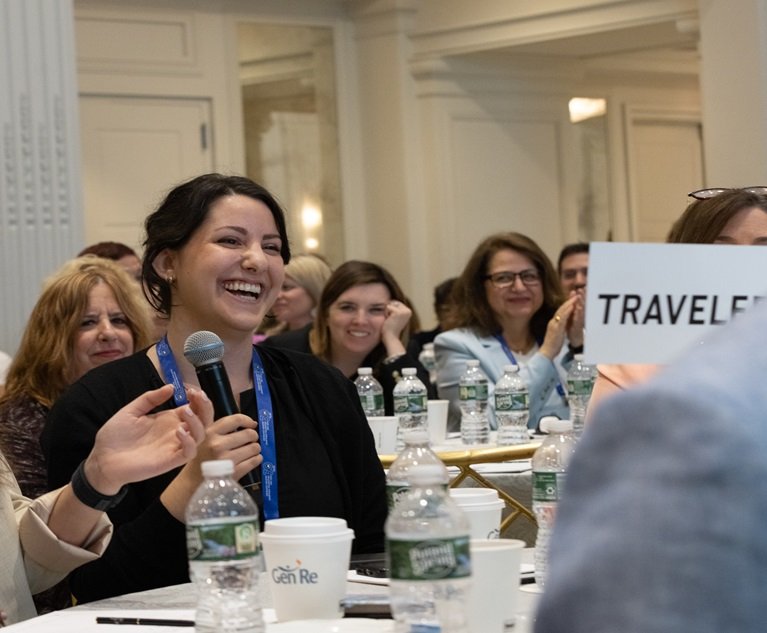Commercial property insurance is often a critical issue inFlorida, and 2009 is no exception. To gain insight into the excessand surplus lines side of that market, Florida Underwriter spokewith Steve Vaccaro, CEO of Max Specialty Insurance Company inRichmond, Va.; E.G. Lassiter, CEO and chairman of RSUI Group inAtlanta; and Francis Moloney, assistant director of AHJ, Ltd., inLondon.
|FL UW: Insurance companies are clamoring for rate increases. Butin today's economy, that is a tough sell. In the surplus linescommercial property market, do you think we will see increases in2009?
|Lassiter: In general, commercial property carriers lost money ontheir property business in 2008. It was an unusual year with muchmore loss activity in tornadoes, hail storms, and floods than inrecent history. With capital constrained, reinsurers are increasingtheir pricing. Based on all of these factors, we expect moderaterate increases in the 2009 property marketplace.
|Vaccaro: There are a lot of moving parts, but I believe rateshave to go up because of three factors: First, the ability ofinsurance companies to raise capital is minimal. Second, if they doraise capital, it will be very costly. Third, investment income ispractically non-existent. All of those factors combined increasethe need for rate increases. As to what degree, you hear 10-15percent for good risks, and much higher for risks with priorlosses. Also, the Jan. 1 catastrophe cover renewals did not reallyprovide a broad cross section of rates. I think you will start tosee increases in rates being more prevalent with March andJune-July renewals. I also think capacity is going to diminish — atleast affordable capacity.
|Moloney: The London Market — like all others — sufferedincreased losses last year, increases in their reinsurancepremiums, and/or a reduction in capacity. As a result, theunderwriters are telling us rates must go up for them to be able towrite business this year.
|FL UW: How bullish are you about writing coastal Floridaproperty?
|Lassiter: “Bullish” would mean that the market terms areterrific. We do not see that to be the case. We have a limitedamount of ability to assume additional exposures in Florida.
|FL UW: But your company wrote considerable property premium inFlorida in 2008, so is it fair to say that you still see Florida asworth the effort required to figure out how to remain a viablemarket for commercial property?
|Lassiter: Yes.
|Vaccaro: We are certainly interested in writing propertybusiness in Florida, but it cannot all be coastal risks. We'llreally need to get a spread of risk. And of course we'll rely onour modeling and pricing system, which is pretty sophisticated.Wherever the risk is located, we must be disciplined and be willingto step away from accounts if the rates cannot be sustainedprofitably.
|Moloney: As a broker, we are very bullish about obtainingincreased orders in Florida this year. When the market conditionsare tough, we tend to see more inquiries. If we can obtain goodterms, then we stand a better chance of securing an order due toreduced competition. The only thing tempering this is a reducedcapacity. Some of the underwriters in London are facing a fewadditional challenges due to the swing in the currency markets.Each Lloyd's syndicate is able to write a certain amount ofbusiness in any one catastrophe area. As the currency rate changes,so does the calculation for available limits. If in 2009 theexchange rate becomes less favorable to London, then theunderwriters would have a new and proportionately lowermaximum-available limit. As a result, the syndicate will probablyhave to come off business that is deemed too cheap and/or reducecapacity on a risk-by-risk basis.
|FL UW: Many in the industry assume that future rates and termswill always be at the mercy of hurricane season results. So whenstorms are prevalent and costly, rates and terms go up, while fewerstorms and less damage bring the opposite result. Is that anover-simplification?
|Lassiter: I believe that is an oversimplification. We areselling coverage for future events, which are unknown. We riskcapital, expecting to make a fair return. The insurance business isan economic model just like any other business. If the return isunsatisfactory, then capital is withdrawn from the market, which iswhat happened in 2006 after the Katrina, Rita, and Wilmahurricanes. When capital (supply) is withdrawn, demand increases,in turn driving up rates.
|Vaccaro: Storm season has limited impact on how we look atFlorida property. We manage to a 250-year and 500-year plan, aformula that includes a long-term look and a consistent ability tooffer coverage “post event.” The capability to continue to writepolicies after an event is critical. If you are going to be acatastrophe writer, then you need to get a spread of business andmanage the portfolio.
|Moloney: As long as the laws of supply and demand exist, thiswill always be the case. After a year of hurricane losses, demandincreases as more people want the cover at a time when supplyreduces, and the price goes up. After a few loss-free years,underwriters have more capital, and supply increases, and pricinggoes down. Please note that it is not only hurricanes that canaffect Florida pricing. A large earthquake or flood elsewhere wouldalso have an effect, as insurance capacity would shrink. Equally,pricing and capacity availability could be affected by the failureof any large multi-national, multi-lines insurer heavily involvedin wind-prone states.
|FL UW: Are we too myopic here in Florida? Does Florida “standalone” when determining rates because of the tremendous values atrisk and premiums to be gained compared to other gulf coaststates?
|Lassiter: We look at our storm tracks and the accumulationsacross multiple landfalls. However, many storms impact Florida; amuch smaller percent impact other gulf coast states. This meansthat the models project that Florida is more exposed, resulting inhigher rates for the exposures we assume.
|Vaccaro: Companies that really understand cat exposures andreturn-on-investment have to underwrite on a portfolio basis. Forour purposes we use a hurricane portfolio and one for earthquake,and then we combine them. We look at Florida as the hurricane PMLs[probable maximum loss] that drive our hurricane portfolio, asvalues and limits are great in Florida. Having said that, I thinkpeople underestimate or minimize Texas; there could have been hugepotential losses if Ike had hit Houston. But Florida is still themain driver.
|Moloney: London underwriters will look at all areas of theirbusiness. Florida will always be toward the top of the list due tothe exposure and concentration of values. Other areas in the U.S.will also feature prominently in underwriters' business plans, suchas California, Houston, the Carolinas, and New York City. Londonunderwriters also see business on a worldwide basis, so otherfactors such as a Japanese earthquake will have a bearing onbusiness plans.
Want to continue reading?
Become a Free PropertyCasualty360 Digital Reader
Your access to unlimited PropertyCasualty360 content isn’t changing.
Once you are an ALM digital member, you’ll receive:
- All PropertyCasualty360.com news coverage, best practices, and in-depth analysis.
- Educational webcasts, resources from industry leaders, and informative newsletters.
- Other award-winning websites including BenefitsPRO.com and ThinkAdvisor.com.
Already have an account? Sign In
© 2024 ALM Global, LLC, All Rights Reserved. Request academic re-use from www.copyright.com. All other uses, submit a request to [email protected]. For more information visit Asset & Logo Licensing.








